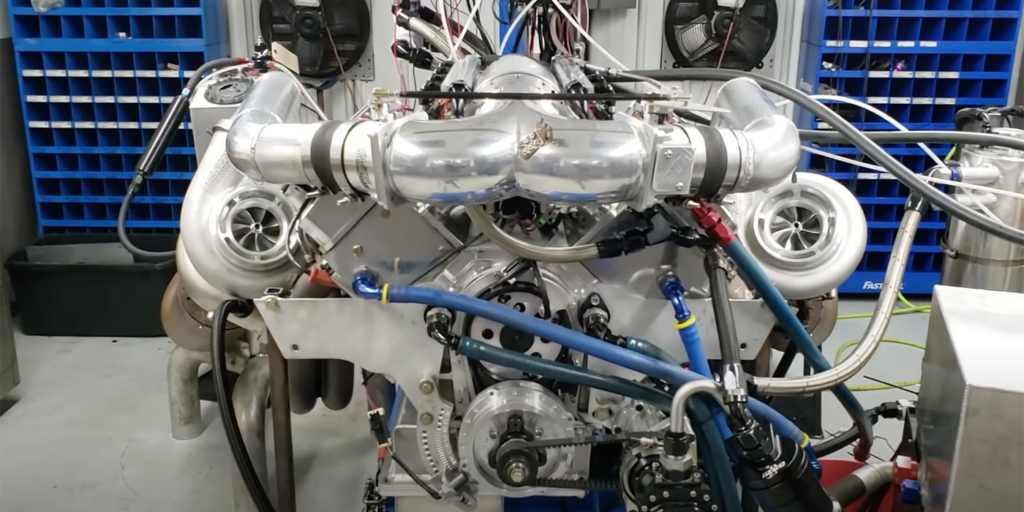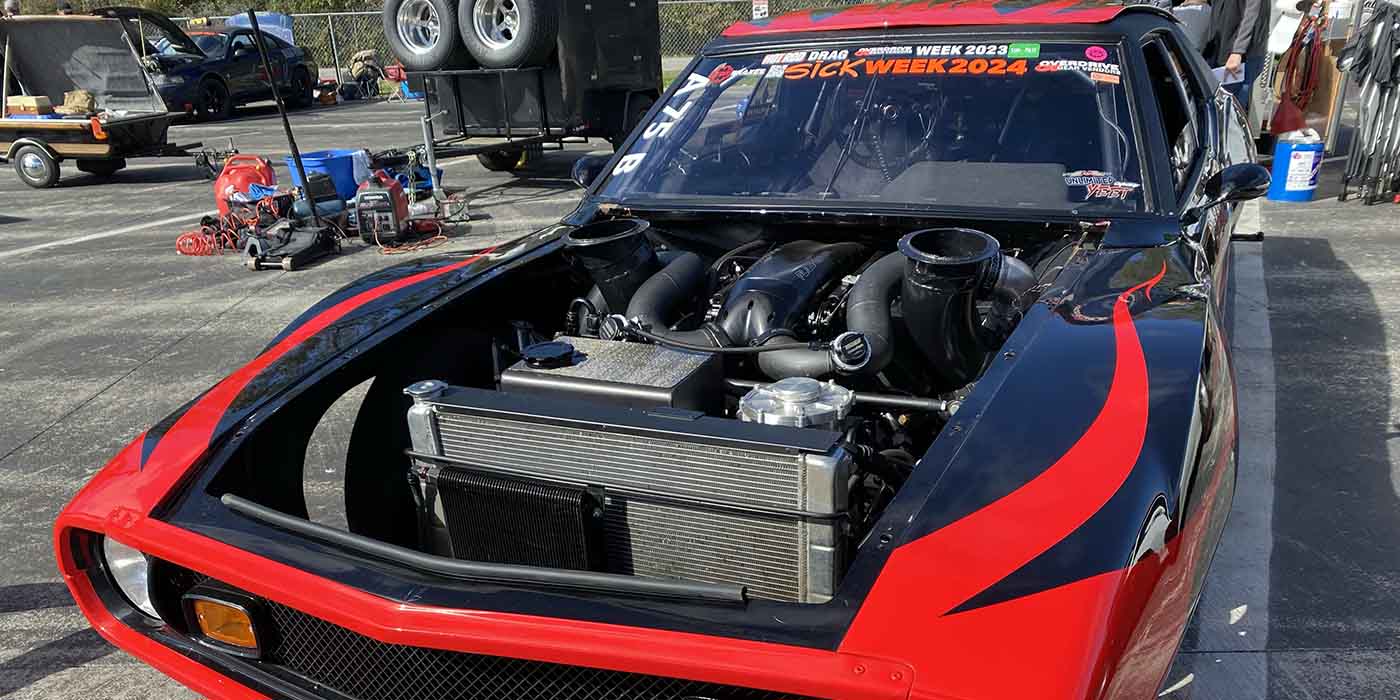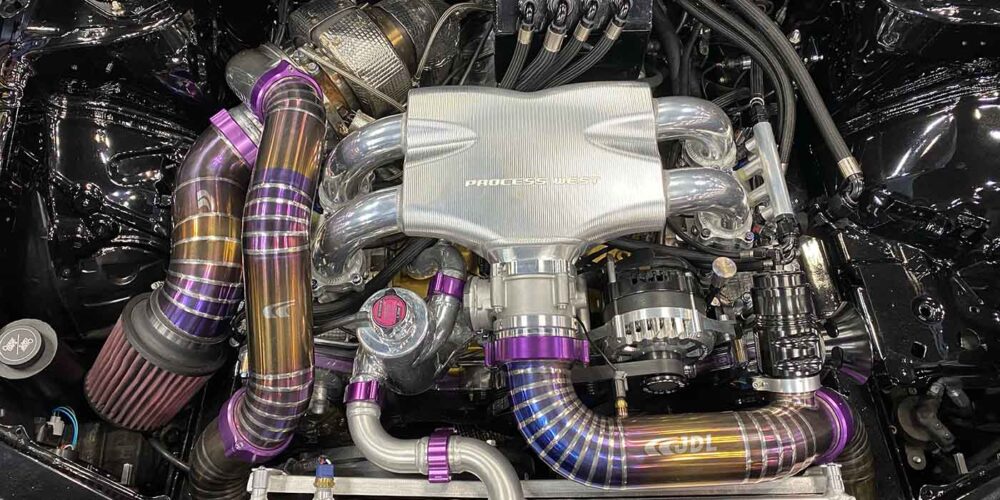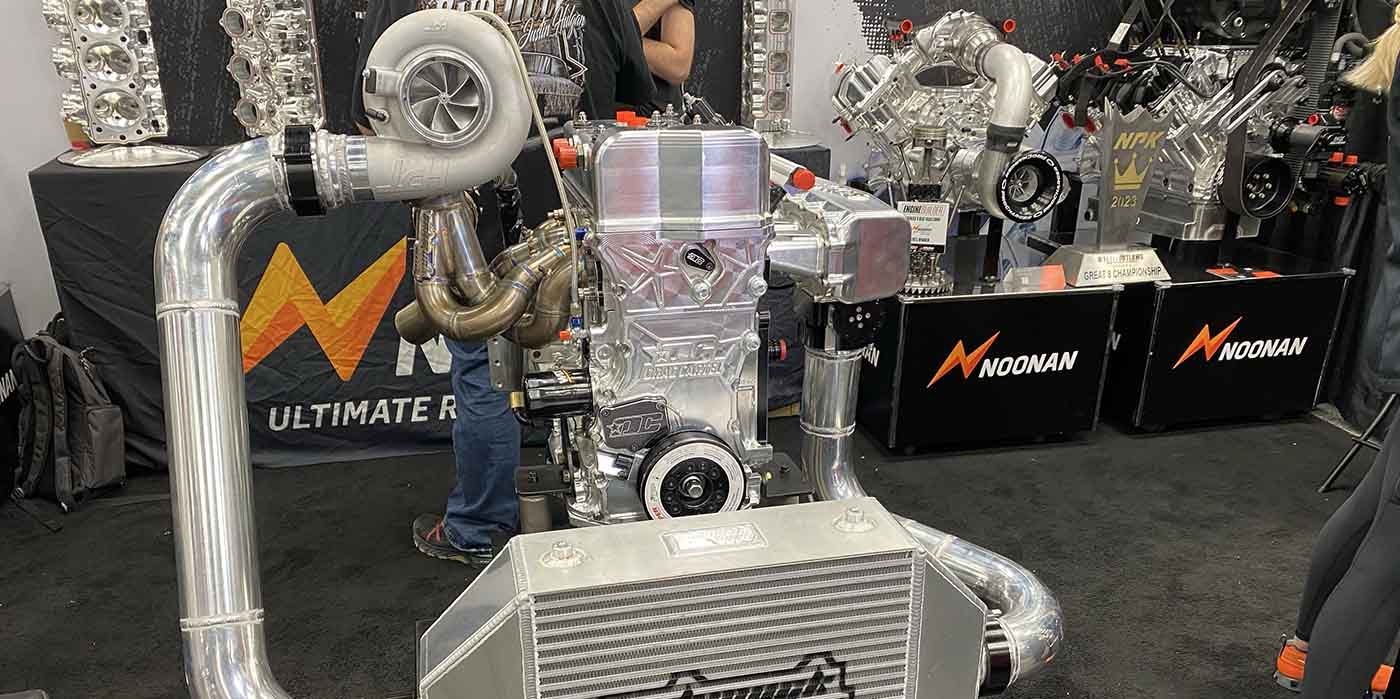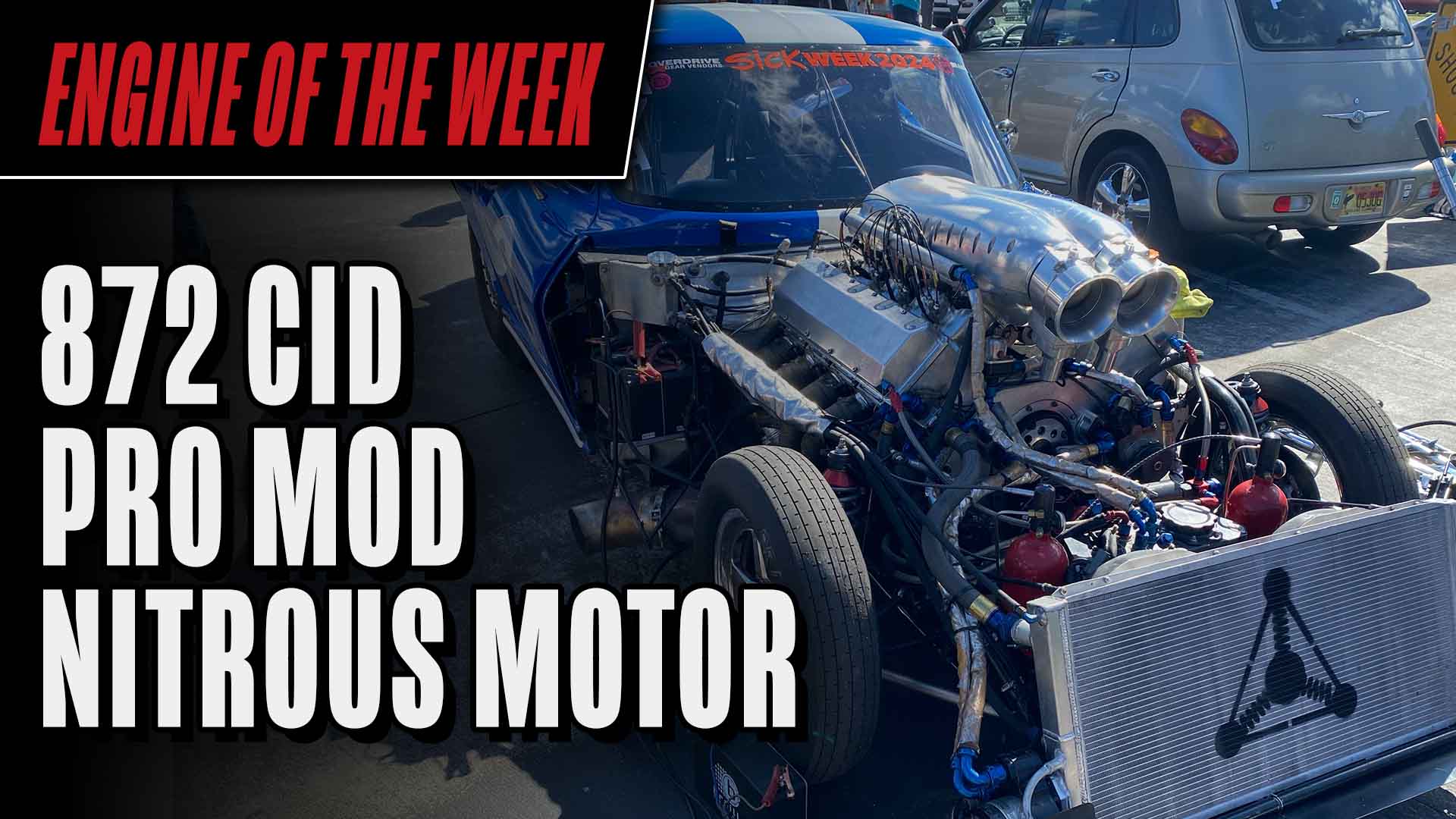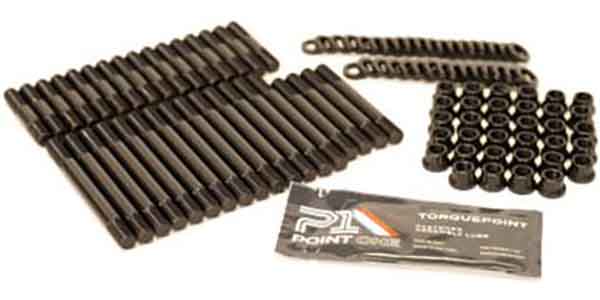Engine of the Week is presented by



Most of you likely know Steve Morris by now. He’s an engine builder who doesn’t need much of an introduction. He’s been building 1,000+ horsepower engines for a long time now, and he’s also been in front of the camera a lot the past two years as part of his Steve Tech video series, which he has partnered with Engine Builder on to help distribute.
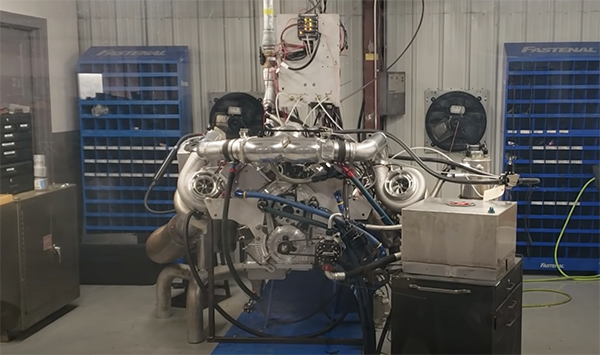
Steve does a great job of breaking down the many aspects and theories of engine building, and it’s no surprise given his background and engine building resume. Steve’s shop, Steve Morris Engines, is located in Muskegon, MI and has the capabilities to do all engine work in-house, including dyno testing and tuning.
Steve started out engine building in high school before going to Fair State University to take the school’s automotive machine program. He then started working for a local shop before heading to Dart Cylinder Heads and working in the Pro Stock engine program.
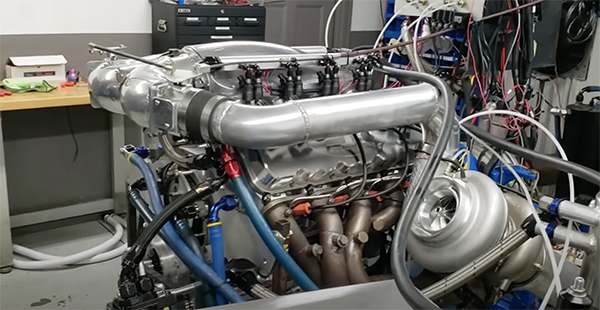
“I gained a lot of experience there,” Morris says. “In fact, that’s probably where I gained a vast majority of my startup experience. I worked there for a few years and then decided I wanted to go out on my own.”
That’s when Steve opened Steve Morris Engines (SME), but it wasn’t until 2010 that Steve bought out his partners in order to run the shop exactly how he wanted. Today, Steve Morris Engines specializes in all boosted motors, despite Steve’s prior experience in naturally aspirated NHRA Pro Stock.
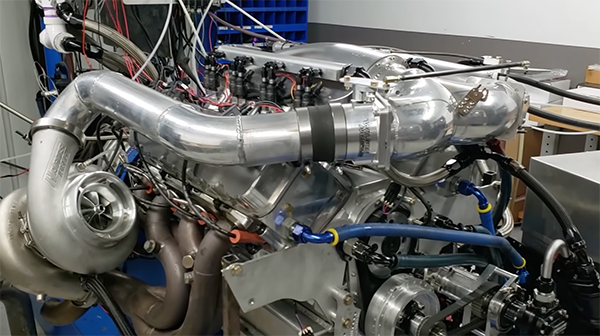
“My niche has really been developed into boosted engines – centrifugal supercharged and turbocharged engines – and currently today we don’t do anything less than a 1,000 horsepower,” Morris says.
The engine shop has several full-time employees, two engine dynos, a hub dyno, a chassis dyno, several balancers, several CNC machines, a line hone, and a boring mill.
“I do everything in-house outside of crankshaft grinding and cylinder head porting,” he says.
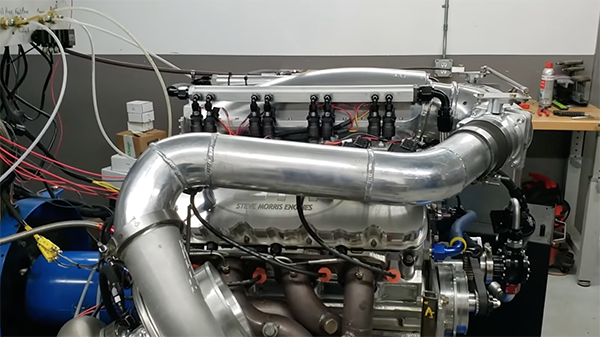
Just recently, Steve finished up work on a customer engine – a 632 cubic inch, twin-turbo build that runs on both pump gas and methanol. The customer is Aaron Jambor, who hails from Nebraska. This 632 big block Chevy is actually a used engine from SME that Jambor selected to rebuild with Steve.
“It is a pretty bad dude,” Morris says of the engine. “Honestly, it’s a pretty bad dude. It’s an all-billet, 5˝ bore space big block Chevrolet – 632 cubic inches. This runs on methanol for race, and the third set of injectors is the street injector for pump gas. We have two fuel systems directly on the car.”
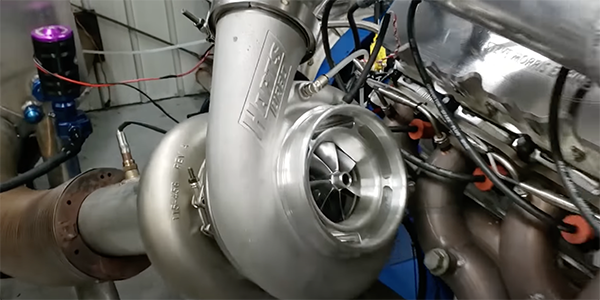
The 632 big block is set up with Holley EFI, titanium connecting rods, a 65mm roller bearing camshaft, an SME billet intake manifold, SME valve covers, and a pair of Harts 88mm turbos with TurboSmart wastegates.
“There are some really cool pieces in this motor,” he says. “This is a Drag Week set up. It’s a fully water-jacketed, 5˝, all-billet motor.”
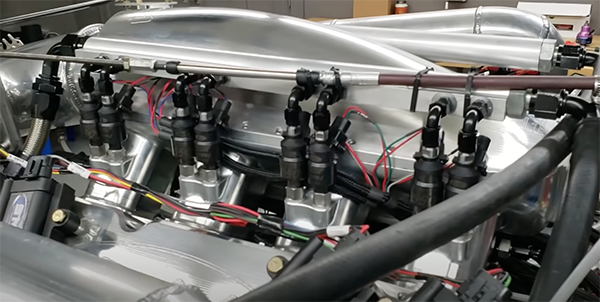
Steve set up the engine on his in-house engine dyno with a methanol tank connected to the methanol pump and system on the engine, as well as a pump gas system connected to the engine. Steve tested the engine on both fuels, but says that the engine isn’t a maximum effort pump gas deal. It’s just meant for a little fun on the street given its small street injector.
“It’s an interesting comparison between pump gas and methanol at these real low boost levels,” he says. “The big cubic inch engines with big turbos on methanol always make really big horsepower. They just seem to be in sweet spots of the map. They just really work well.”

Steve first tested the engine on 93 octane pump gas using a street tune, which was no boost and just running on a wastegate with a 3 psi wastegate spring. Running on 93 octane with 4.5 lbs. of boost, the 632 big block made 1,341 hp at 6,700 rpm and 1,070 lb.-ft. of torque at 6,500 rpm.
“The engine lays down after 1,300 horsepower because we weren’t throwing any more boost at it,” Steve points out. “That’s the nature of big cubic inch engines where we’re not ramming more air through them. As soon as it reaches a certain spot, it will naturally lay over. Since we’re not spinning the turbo any faster, it technically becomes some form of a restriction.”

On methanol and just the wastegates with 5.5 lbs. of boost, the engine made 1,800 hp at 7,100 rpm and 1,397 lb.-ft. of torque at 6,100 rpm.
“You have to remember that the curve isn’t linear – just because the engine made 1,800 hp on 5 lbs. of boost, doesn’t mean it will make 3,600 hp on 10 lbs. of boost or 5,000 hp on 20 lbs. of boost – it doesn’t work that way,” Morris says. “It’s just at a very efficient spot on the map. It’s moving a lot of air versus pressure. Boost is a restriction number. It is not a flow number per say. It’s how much restriction the air pump is presenting to the turbos.”
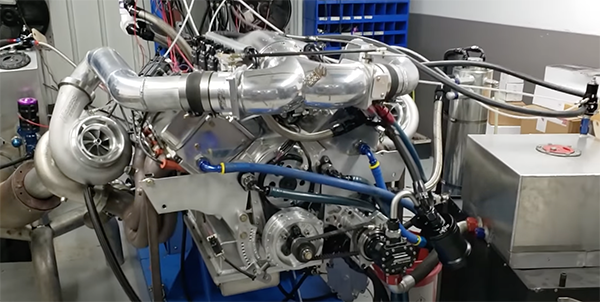
Steve ran the engine this way to showcase the difference in horsepower it could produce just given the different fuels.
“It’s interesting to see the difference between pump gas and methanol,” he says. “The methanol gives it more energy and more boost given the exact same system and everything – it’s just fuel to fuel differences.”
Of course, Steve didn’t end the testing and tuning there. With the boost turned up to the point that it was meant to run, the 632 produced 3,637 hp at 7,800 rpm and 2,460 lb.-ft. of torque at 7,700 rpm. The boost level reached 30 lbs. at 7,800 rpm.
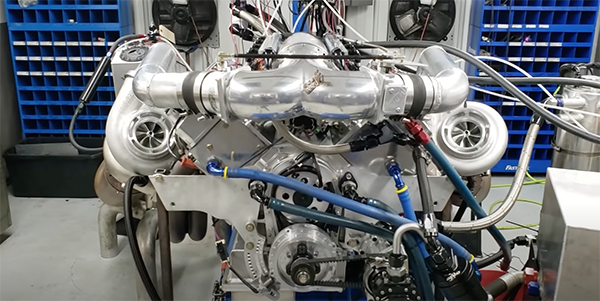
“These turbos are pretty much done at that point, but even so, it’s outstanding,” Morris says. “This engine is going to be a super solid piece for Aaron in his Chevy II street car.”
Engine of the Week is sponsored by PennGrade Motor Oil, Elring – Das Original and Scat Crankshafts. If you have an engine you’d like to highlight in this series, please email Engine Builder Editor Greg Jones at [email protected].

